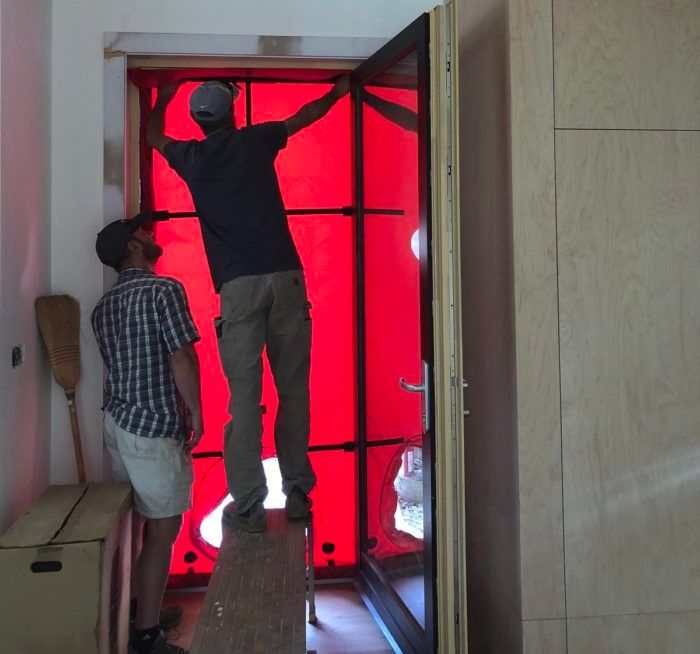Blower-Door Test Confirms High-Performance-Home Status
The air-sealing efforts pay off with Passive House–level airtightness

I used to be nervous about the airtightness on our projects and would do multiple blower-door tests during construction. On my own house—despite the geometry—I was confident we would be airtight, and I kept procrastinating. Finally, I got the blower door out as the finishes were happening. I forgot to seal the HRV ducts for the test and was momentarily puzzled that the house would not depressurize. Some tape and plastic over the intake and exhaust, and it started to ramp up with the fan: Then—poof—it was back down to zero! Well, one of the tilt-turn windows had gotten left in turn mode and was sucked open. That was a big leak! With that window closed, we ramped up to a vacuum of 50 pascals easily with 240 cfm50. With a conservative volume of 24,000 cu. ft., we got 0.6 ACH50. I am pleased for sure and know that the numbers could improve, as there are a few unsealed conduits, the dryer and range hood just had gravity dampers to stop air in those two holes, and the DWV plumbing is open to the roof with no water in the traps.
Often we use Sierra Pacific windows on projects, and those houses always test at around 1 ACH50. My house with complex geometry and upside-down assemblies is 40% tighter, and I know it is all about the Zola Passive House windows and doors.
More from the California FHB House project
- Why Do Most Passive House Projects Use European Windows?
- FHB House Video: The Building Envelope
- Air-Sealing a High-Performance House
Fine Homebuilding Recommended Products
Fine Homebuilding receives a commission for items purchased through links on this site, including Amazon Associates and other affiliate advertising programs.

Plate Level

Smart String Line

Anchor Bolt Marker






















































